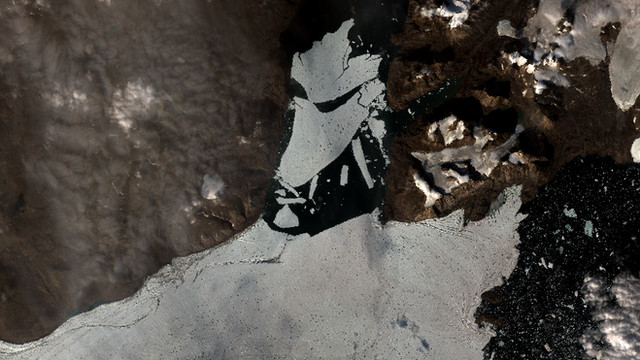A large chunk of ice has escaped from the largest remaining ice sheet at the Arctic in northeastern Greenland.
The part that was detached has an area of about 110 square kilometers; Satellite images show it has been broken into many smaller pieces.
Scientists say this loss adds to evidence that climate change is happening rapidly in Greenland.
“The atmosphere in this region has warmed by 3C since 1980,” said Dr. Jenny Turton.
“And in 2019 and 2020, he set record summer temperatures,” the researcher at the Friedrich-Alexander University in Germany told BBC News.
The ice is named 79N or Nioghalvfjerdsfjorden ..
Nioghalvfjerdsfjorden is approximately 80km long and 20km wide and sits at the end of the Greenland Ice Stream.
At its leading edge, the 79N glacier split in two, with one small section turning directly north.
This section, called the Spalte Glacier, has now been destroyed.
Previously, the ice bodies appeared to have been severely cracked in 2019; This summer’s warm weather has been the last devastating ‘offensive’.
“79N became the ‘largest remaining Arctic ice sheet’ recently, after the Petermann Glacier in northwest Greenland lost much of its territory in 2010 and 2012,” said Professor Jason Box of the Geological Survey of Denmark and Greenland (GEUS).
“What makes the 79N so important is the way it attaches to the interior ice sheet, and that means that one day – if the climate warms up as we predict – this region may become one of the centers of ice degradation in Greenland.”



